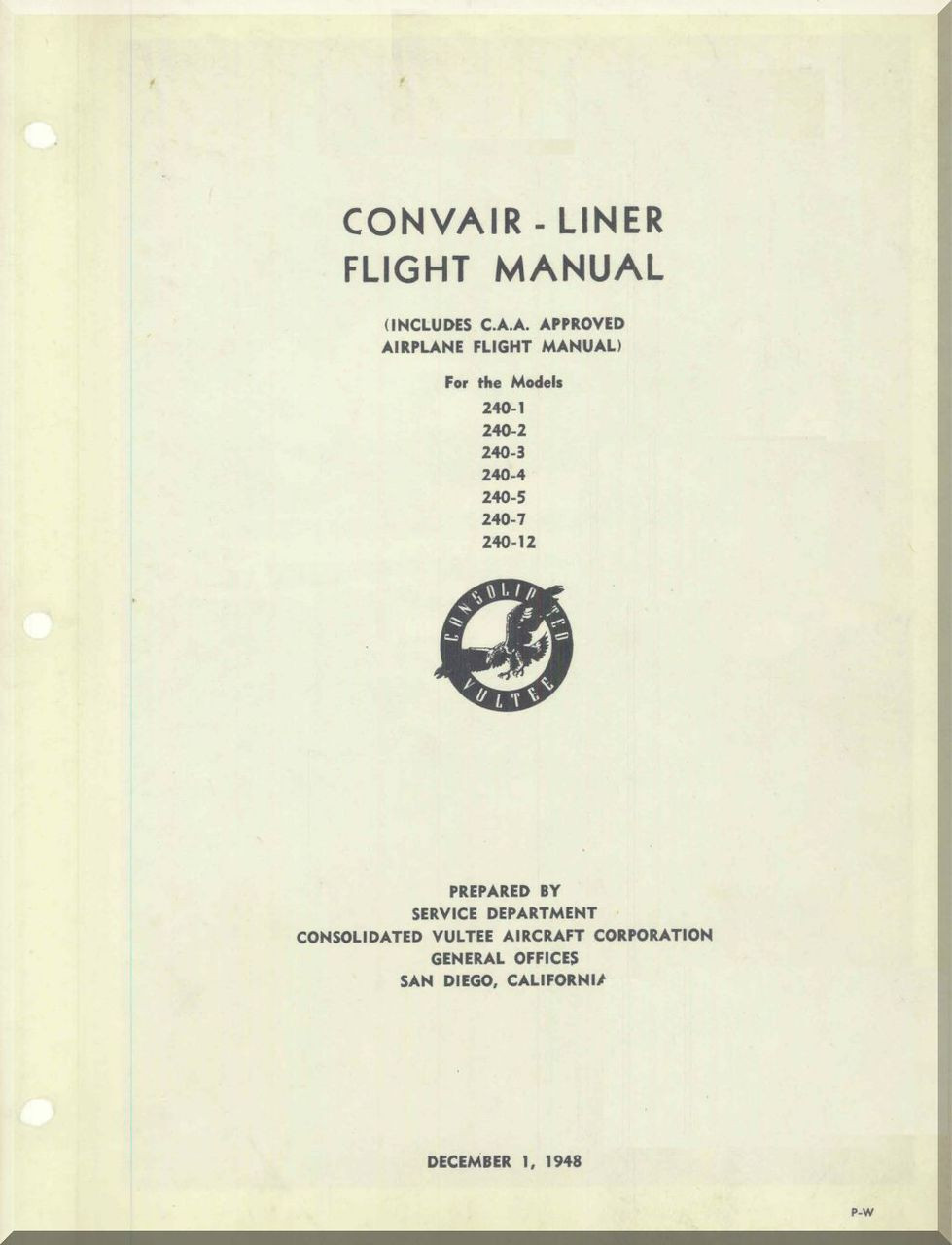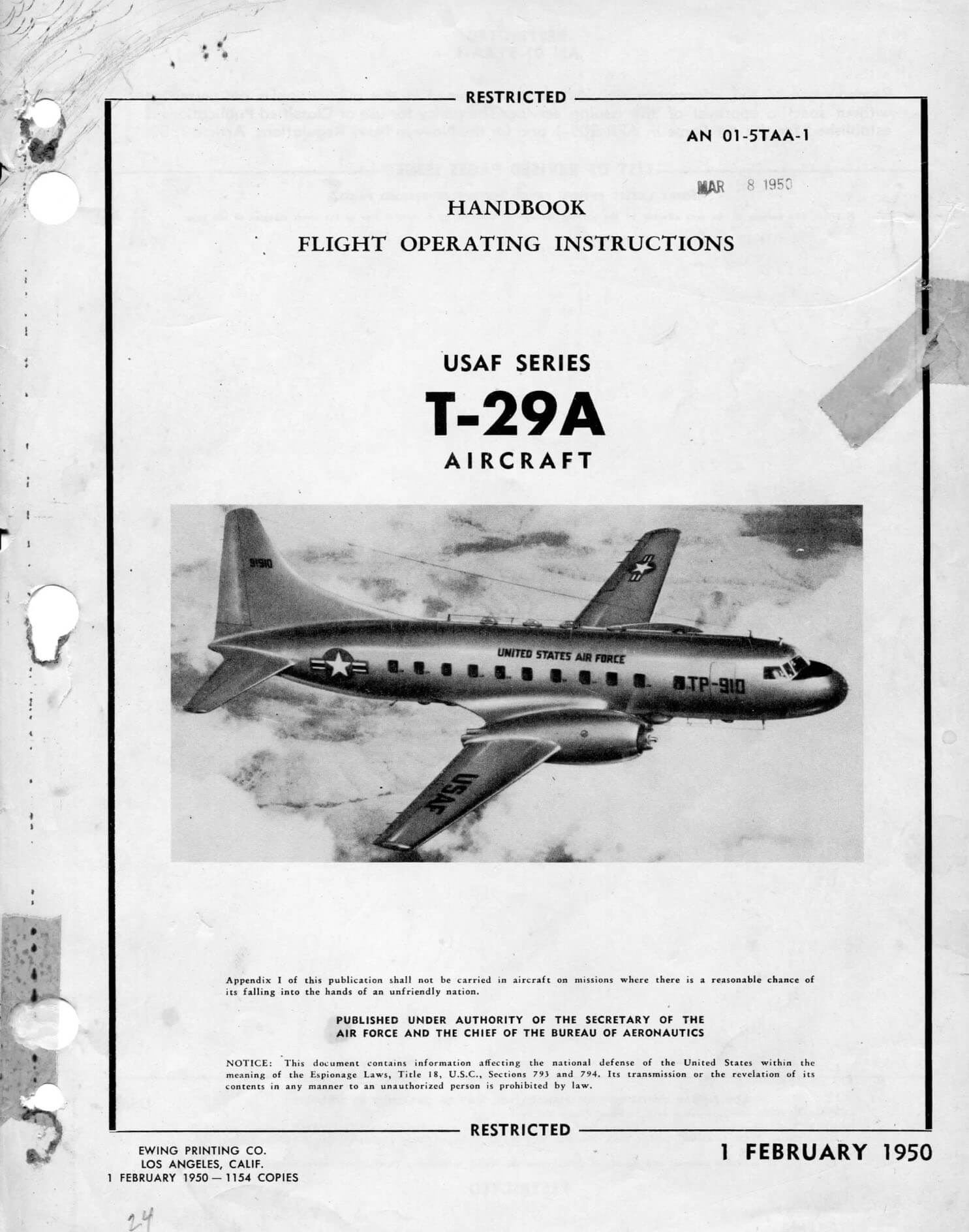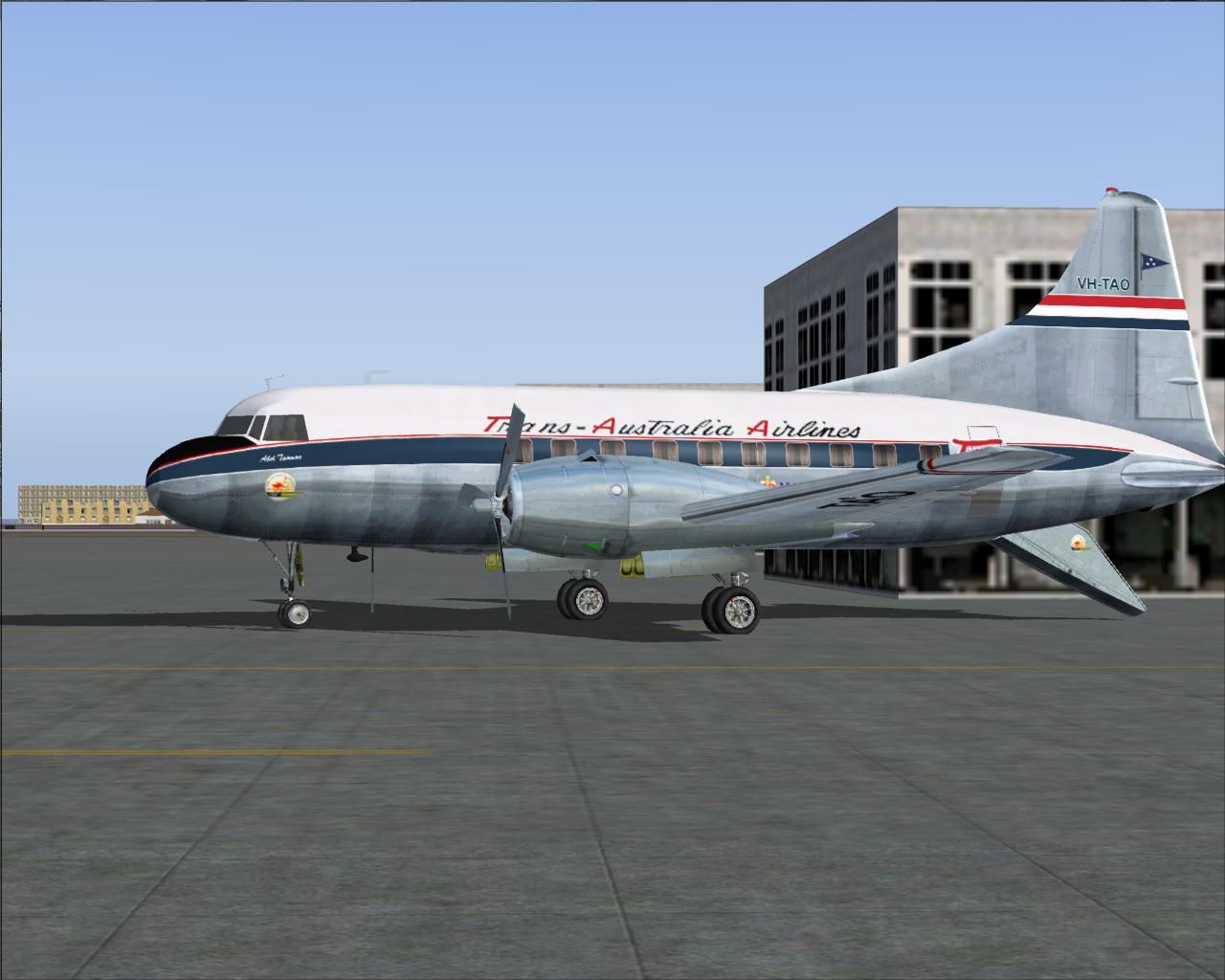- Convair 240 Flight Manual For Sale
- Convair 240 Flight Manual Pdf
- Flight Training Manual
- Convair 240 Aircraft Specifications
- Convair 240 Flight Manual Pdf
Celebrating the 75th Anniversary of Consolidated Aircraft Corporation/Convair coming to San Diego.Founded by Reuben H. Fleet in 1923, Consolidated Aircraft Corporation (later Convair) became one of the most significant aircraft manufacturers in American history. For roughly sixty years this prolific company was synonymous with San Diego and, except for the United States Navy, the largest single employer in the County. Consolidated was responsible for building some of the most important aircraft in aviation history, including the PBY Catalina, B-24 Liberator, Convair 880 airliner, F-102 Delta Dagger, as well as the reliable Atlas missile, which was vital in launching America into space. These photos showcase many of the people and projects which made Consolidated/Convair such an important aerospace company.
Reuben Hollis FleetReuben H. Fleet was born on March 6, 1887, in Montesano, Washington. Graduating from the Culver Military Academy in 1906, he went on to form a real estate business and became the youngest member of the state legislature in 1915. Just days before the United States entered World War I, Fleet volunteered for pilot training with the U.S. Army’s Signal Corps Aviation Section, thus beginning his long career in aviation.
Ex AA N94224 - Photo taken at Dallas - Love Field (DAL / KDAL) in Texas, USA in September, 1962.

File Contents Convair CV-240-2, cn 24, delivered to Pan American World Airways on April 30, 1948 and registered N90658. Bought by VARIG on October 15, 1954 and registered PP-VCP. In May 1970 withdrawn from use and broken up at Sao Paulo-Cononhas. PDF Convair 240 flight manual - read & download Convair 240 Manual might not make Page 3/16. Where To Download Convair 240 Manual exciting reading, but Convair 240 Manual comes complete with valuable specification, instructions, information and warnings.
Rockwell FieldFleet joined the U.S. Army Signal Corps on March 29, 1917, attending flight training at the Army’s aviation school at Rockwell Field, San Diego, California. Seen here is Fleet posing in front of one of Rockwell’s Curtiss Jenny trainers.
First Airmail ServiceOn May 15, 1918, the Post Office Department began scheduled airmail service between New York and Washington, D.C. utilizing Army planes and pilots. Seen here on that day is Reuben Fleet, who was named Officer-in-Charge of the Aerial Mail Service.
PT-1 Trainer On May 29, 1923 Fleet organized Consolidated Aircraft Corporation. The company was first located in the Gallaudet aircraft factory in East Greenwich Rhode Island and a year later moved to the Curtiss plant in Buffalo, New York when it received an Army contract to build PT-1 trainers. Reuben Fleet (center) and friends in front of a Consolidated PT-1.
Exterior of Consolidated Plant Seen here is the outside of the Buffalo plant circa 1923.
Interior of Consolidated Plant Inside Consolidated’s Buffalo plant circa 1925 showing construction of PT-1s. Note the women in the foreground, sewing fabric for the aircraft.
PBY Catalinas Attracted to the mild climate of San Diego, Fleet moved Consolidated Aircraft Corporation from New York to California in 1933. San Diego’s weather proved ideal for the building and testing of flying boats. Image of Consolidated PBYs production run and shows the first five planes about a month before they were delivered to the Navy. The PBY was one of the most versatile aircraft of World War II, with a large payload capacity and extraordinary range.

San Diego Plant The grand opening of the San Diego plant on October 20, 1935 with the XP3Y-1 on display. The city of San Diego rolled out the welcome mat for Fleet and his company with 30,000 residents flocking to the airport for the ceremony.

B-24 Manufacturing With the outbreak of World War II, the aircraft industry became the largest single industry in America. The enormous aircraft production contracts required a tremendous mobilization of machine tools, labor and production engineering. In San Diego alone, Consolidated produced 6,726 of the 18,482 total B-24s built for the war.
Prototype of the first B-24 The first B-24, named “Grand Pappy”, spent nearly its entire career at Consolidated in San Diego where it was used as a flying test bed for many projects. In late1944 it was converted to a VIP transport in which guise it served until being retired at the end of the war. It is seen here at the San Diego factory with a group of company test pilots in 1944.
Women Workers Like most of America’s defense industries during World War II, the Consolidated Corporation relied heavily on women for its workforce. In 1943 forty percent of Consolidated’s employees were women.
V Grand Seen here with a group of Consolidated employees is the 5000th Liberator built at San Diego, named “V Grand”. The airplane was signed by hundreds of factory workers and visiting dignitaries before being accepted by the Army Air Force. The airplane, which carried the signatures throughout its career, served in combat with the 15th Air Force in Italy.
Model 28 Catalina Richard Archbold’s Model 28 Catalina taxis on San Diego Bay in front of the landmark county administrative building in December 1937. During 1938 and 1939 Archbold and his crew would complete the first flight around the world at its widest diameter, approximately at the equator. This flight included three firsts; a) the first flight across Australia by a seaplane, b) the first flight across the Indian Ocean by any airplane, and c) the first flight across equatorial Africa by a seaplane.
Convair 240 Flight Manual For Sale
Convair 240 This picture shows the prototype Convair 240 flying over Point Loma and San Diego Harbor on its way back to Lindbergh Field on March 1947. The Model 240 was a private company venture intended as modern replacement for the famous Douglas DC-3. The success of the 240 led to the development of the Model 340, 440, and significant contracts from the Air Force and Navy.
Low Speed Wind Tunnel The Low Speed Wind Tunnel began operations under the direction of Consolidated Vultee (Convair) in May 1947, located at Lindbergh Field off of Pacific Highway (south of the main plant). The tunnel has been used in numerous military and civilian aerospace development programs, including the F-106, B-58, F-111, F-16, Global Hawk Unmanned Aerial Vehicle (UAV), Tomahawk Cruise Missile and Advanced Cruise Missile. The facility is now known as the San Diego Air and Space Technology Center Wind Tunnel.
Convair 240 Flight Manual Pdf
Seen here is activity at Convair’s Lindbergh Field plants on an unusual rainy day in San Diego. The Wind Tunnel building can be seen enter, right.
This image is the inside of the wind tunnel.

F-102 Delta Dart The General Dynamics F-102 Delta Dart borrowed heavily on wartime German research into the use of delta wings for high speed flight.

Sea Dart XF2Y-1 This unique navy aircraft was capable of taking off and landing on water. Only five were built, one of which is now part of the San Diego Air & Space Museum’s collection. In the 1950s it was common to see this airplane flying over San Diego bay during test flights.
POGO Convair used captured German research information and the newly designed Alison YT40 turboprop engine, to design the revolutionary XFY-1 POGO, a vertical takeoff and landing escort fighter for the U.S. Navy. Only three were built, the first was the only one flown by James “Skeets” Coleman. This aircraft is now part of the National Air & Space Museum’s collection.
Atlas Launch Vehicle In 1954 General Dynamics purchased a majority interest in Convair. The General Dynamic’s Convair Division became best known for its production of the Atlas Missile, the first successful intercontinental ballistic missile (ICBM) able to fly up to 5,000 miles and carry a nuclear payload. Seen here are the metal rings of the Atlas that were welded together to fabricate the tank.
Flight Training Manual
Airport Facility on Pacific Highway Image taken in 1957 showing the Convair Plant 1 Facility with the exception of the Northern end of Building 3 and the Garage. A covered Atlas missile, at the North end of Building 4, awaits departure. Nearly all the land in this picture was once the San Diego Harbor.
Convair 240 Aircraft Specifications
First Atlas Test The first version of the Atlas was transported by guarded caravan to Cape Canaveral, Florida for testing. Later, the Atlas would be transported by air using the US Air Force C-133.
Convair 240 Flight Manual Pdf
Complex 14 Because the Atlas had such a powerful lifting platform, it was also used by the U.S. in its space program. An Atlas launched the first Americans into orbit during the Mercury space programs, which eventually led to putting a man on the moon. Seen here is an Atlas missile on the test stand at Complex 14, Cape Canaveral, Florida. Notice the moon in the background, future target for several space efforts.